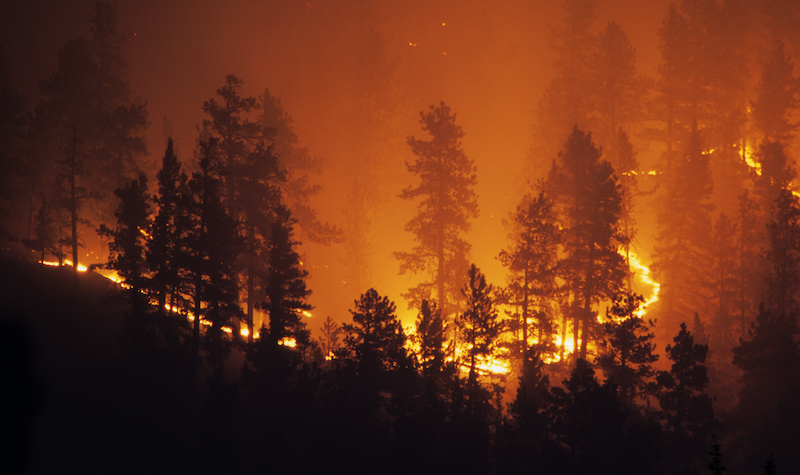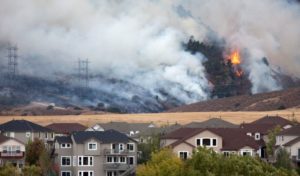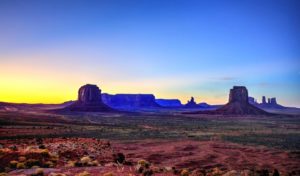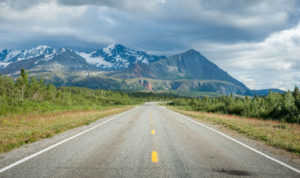
Scholars encourage regulatory authorities to adopt measures to prevent or mitigate wildfire damage.
Paradise, California resident Brad Weldon saved his home with a garden hose. When the 2018 Camp Fire threatened his neighborhood, Weldon—who had previously lost multiple homes to wildfires—refused to evacuate.
Instead, armed with his garden hose, he protected his home and his 89-year-old mother from the fire. Weldon was a fortunate survivor; the Camp Fire killed 85 people, cost 30,000 people their homes, and burned 153,335 acres.
The Camp Fire remains the most destructive fire in California history, having caused $16.5 billion in damage. But wildfires are only growing worse across the globe, as wildfire frequency, acreage burned, and costs all skyrocket.
Experts point to three causes.
First, the fire-suppression policies of the U.S. Forest Service made federal lands more susceptible to wildfires. For nearly a century, federal land managers have aimed to end all fires on federal lands through policies such as the “10 a.m. rule,” which encouraged firefighters to suppress every reported fire by 10 a.m. on the next day. In the modern era, U.S. authorities allow only 0.4 percent of wildfires to burn. Critics argue that suppression policies interrupt natural burning cycles and produce “uncharacteristically dense forests” that fuel enormous fires.
Second, land development has increased in the wildland-urban interface (WUI)—regions vulnerable to wildfire with human-made structures such as housing, schools, and water infrastructure. Economists estimate that almost 50 million homes are now in the WUI, after decades-long annual increases of about 350,000 homes. Wildfires occur more frequently in the WUI and are more costly and difficult to fight.
Finally, climate change increases fire risk. Warmer temperatures lengthen fire seasons, increase lightning and winds that ignite and spread fires, and lead to dry, fast-burning vegetation. As Stefan Doerr of the Swansea University in Wales explains, higher temperatures create “a greater probability of fire starting, fire spreading, and fire intensifying. That’s basic physics.”
Can anything be done to address wildfire destruction? Maybe.
Although no solution will immediately or completely stop devastating wildfires, scholars have proposed regulatory and policy solutions to alleviate the severity of wildfires. This week’s Saturday Seminar highlights scholarship that proposes state, local, and federal actions that authorities can take to prevent and improve the management of wildfires.
- The United States must address the factors that cause and worsen forest fires, Deborah Sivas of Stanford Law School argues. In a recent essay in The Regulatory Review, she encourages changes to forestlands management and WUI regulation. She advises forest managers to end traditional logging practices, clear forests manually, and run controlled burns. Noting that these policies are expensive, Sivas suggests prioritizing intervention in the riskiest areas. In the short term, Sivas also recommends adopting building codes that require “hardening” structures in the WUI against wildfire by “using fire-resistant materials, designs, and placements for roofing, walls, windows, decks, vents, and propane tanks.” According to Sivas, however, the long-term solution “is to move—and keep—people out of harm’s way.”
- In an article in The Urban Lawyer, Stephen R. Miller of the University of Idaho College of Law advocates regulations to guide thoughtful development in the WUI. Miller suggests that authorities can prohibit all development if wildfire risk is too high. But when the risk is lower and communities permit development in the WUI, Miller recommends adopting building codes and zoning regulations “to ensure that a development is built to withstand wildfire.” Miller argues that simple measures such as ordinances that require landowners to reduce weeds and hazardous vegetation or to install fire-resistant roofs can mitigate risks in WUI developments.
- Policymakers should consider “retreat” alternatives to current environmental policies to combat wildfires, Pennsylvania State University’s Jamison E. Colburn argues in a Journal of Environmental Law and Litigation article. Invasive policies such as the 10 a.m. rule and WUI buildup “create more of the very risks” that they “aim to minimize,” Colburn claims. He outlines retreat policies that could cut down on these wildfires, such as diminishing the “overused and ineffective” use of airborne tankers to fight wildfires. In addition, Colburn recommends decommissioning roads on public lands to shrink the human footprint in vulnerable areas where human ignitions present a wildfire policy concern.
- Wildfire suppression policies in the United States may not maximize long-term human health and air quality, Donald Schweizer and Ricardo Cisneros of the University of California, Merced argue in Air Quality, Atmosphere, and Health. According to Schweizer and Cisneros, federal authorities must revise regulations to “incorporate long-term sustainability of air quality in and around areas” where wildfires occur frequently. More lenient fire suppression policies will create healthier ecosystems and improve air quality and public health in the long term, Schweizer and Cisneros argue.
- To prepare for natural disasters, Congress should take a cue from federal agencies and consider collaborating with groups that have an interest in land management, Karen Bradshaw of Arizona State University argues in an Arizona State Law Journal article. Collaborations with groups such as landowners, Native Nations, and conservationists are “vital to agency decision-making,” she argues. According to Bradshaw, these collaborations provide multiple benefits—“diverse viewpoints” lead to better decisions, and these decisions have “greater social acceptance” when different groups buy in. Potential downsides, however, include higher socioeconomic groups dominating the collaborative process and conflict arising from agencies’ need to maintain their final decision-making authority when addressing natural disaster preparation.
- The U.S. Forest Service should include Native Nations in sustainable forest management on their ancestral lands, according to Cynthia R. Harris of the Environmental Law Institute. In an essay in The Regulatory Review, Harris points to several legal avenues that provide such an opportunity. For instance, under the Tribal Forest Protection Act, Native Nations may propose projects to federal land managers that address fire threats “that originate on federal lands but affect adjacent tribal trust land or tribal communities.” Similarly, statutory Good Neighbor Authority empowers Native Nations to enter cooperative agreements with federal forest managers “to carry out restoration projects on federal land.” Regardless of the legal avenue for collaboration, federal wildfire management should aim “to promote tribal sovereignty” and “advance better forest stewardship,” Harris concludes.
The Saturday Seminar is a weekly feature that aims to put into written form the kind of content that would be conveyed in a live seminar involving regulatory experts. Each week, The Regulatory Review publishes a brief overview of a selected regulatory topic and then distills recent research and scholarly writing on that topic.



